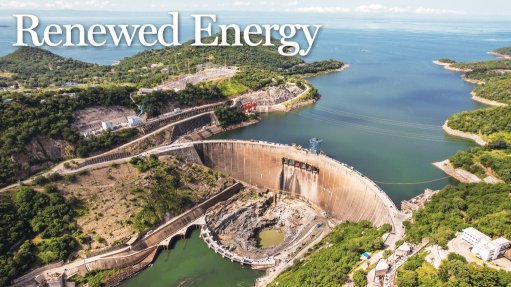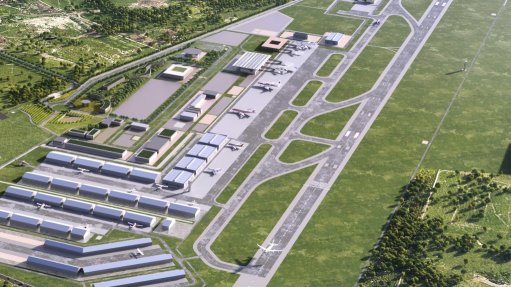Renewables bodies await publication of Eskom’s curtailment framework
The associations representing the wind and solar sectors as well as independent power producers (IPPs) more generally are eagerly awaiting a proposed curtailment addendum to Eskom’s Grid Connection Capacity Assessment (GCCA), which is published yearly to provide connection visibility for new utility scale generators.
The latest GCCA was published at the end of October and states that, while there is still 19.9 GW of capacity available, all capacity has been absorbed in the Eastern, Western and Northern Cape provinces, as well as Eskom’s Hydra Central grid area, which borders the Cape provinces and the Free State.
It was published in the absence of a highly anticipated new framework outlining Eskom’s approach to curtailment, which has potential to unlock significant capacity in areas that have previously been shown as having no more capacity to connect.
Curtailment involves the active reduction of output from wind and solar plants in response to system security needs or temporary transmission capacity constraints and is widely used by system operators globally to introduce variable renewable generators and optimise the use of the grid. It follows a logic that can arguably be likened to the one used by airlines when seating is overbooked ahead of a scheduled flight in an effort to ensure it is full in a context where some bookings are likely to fall away.
Eskom has belatedly aligned itself to this view, having indicated that curtailment will be used even when additional grid capacity is added in areas of constraint, as it would yield the most cost-effective outcome and is, thus, fully aligned to the least-cost criterion embedded in the country’s Grid Code.
The lack of such a framework came to the fore painfully last year when none of the 23 wind projects that bid for a 3.2 GW public-procurement allocation was selected to proceed on the basis of grid depletion.
Eskom has confirmed that a curtailment addendum to the GCCA will be published and has indicated that the framework should unlock 4 GW of connection capacity immediately in the wind-potent Eastern and Western Cape provinces.
However, it has not yet indicated when its curtailment addendum will be published. This, despite confirmation by the IPP Office that the framework is required before it can announce the next public procurement round, which was initially scheduled for mid-2023.
South African Photovoltaic Industry Association (SAPVIA) CEO Dr Rethabile Melamu describes the release of the GCCA without the curtailment framework and the associated connection capacity that would be unlocked in each supply as “not ideal”.
“The understanding is that the curtailment framework will unlock additional connection capacity in the constrained greater Cape area, which should have informed available capacity,” she says, while also noting that the framework will not immediately embrace solar photovoltaic (PV).
South African Independent Power Producer Association chairperson Brian Day argues that Eskom’s previous approach to calculating grid capacity, which limits it to a single short period of constraint across the year, sub-optimises the grid potential.
“I can’t quite understand why we haven’t engaged on the curtailment approach long ago,” Day adds.
He says curtailment rules will unlock significant capacity, and reveals that business is actively engaging to propose commercially viable rules.
South African Wind Energy Association (SAWEA) CEO Niveshen Govender says he is pleased that Eskom is considering a curtailment framework that will expand the grid capacity in the short term.
“The curtailment framework needs to be well-considered to ensure positive investment conditions for new energy generation infrastructure projects in the South African market.”
The associations are also keen for consultations on the framework, with clarity needed on the apportionment of curtailment costs.
Eskom has raised eyebrows with its recent proposal that compensation for curtailment be a contractual matter between buyers and sellers, rather than between the seller and the infrastructure provider that is unable to transport the energy.
Meanwhile, SAPVIA and SAWEA have both praised Eskom for publishing a regular GCCA, as well as the growing transparency offered by the report.
However, the bodies felt that the document could be updated more frequently, with Govender arguing that it should be a “living document with regular updates; the more regular the better”.
“SAPVIA is supportive of a frequently updated GCCA whenever a new or better approach is ready for implementation,” Melamu adds.
She has also reiterated the association’s appeal for transmission network optimisation studies to be undertaken to evaluate the opportunity presented by the co-location of solar PV and wind generation assets at the same substation, which together with curtailment, could further optimise the use of the grid.
Day, meanwhile, underlined the importance of expanding and strengthening the grid in parallel and expressed concern at the low levels of construction planned for the next three years.
“The planning seems to be ramping up, with more projects going into the procurement phase, but actual construction is far too low in the short term,” he says.
To increase the adoption of wind energy, Govender argues that investment into generation needs to be focused on strengthening and expanding the grid in the resource-rich regions of the country as well as unlocking capacity in constrained regions through grid management and optimisation.
There is also potential for new wind generation to be developed outside the Cape areas, but this will require a well-planned and coordinated approach.
For the immediate future, however, precedence will have to be given to projects that are advanced in their development lifecycle to ensure that new generation capacity can come online as soon as possible.
Moving from a ‘first-come, first-served’ to a ‘first-ready, first-served’ approach is also consistent, Melamu says, with international best practices and should be supported.
Nevertheless, she strongly encourages Eskom to take further steps to enable additional capacity on the grid as soon as possible.
“The Northern Cape in particular has the strongest solar resource in the country and SAPVIA will continue to engage with Eskom to create more transmission capacity in the area.”
Article Enquiry
Email Article
Save Article
Feedback
To advertise email advertising@creamermedia.co.za or click here
Comments
Press Office
Announcements
What's On
Subscribe to improve your user experience...
Option 1 (equivalent of R125 a month):
Receive a weekly copy of Creamer Media's Engineering News & Mining Weekly magazine
(print copy for those in South Africa and e-magazine for those outside of South Africa)
Receive daily email newsletters
Access to full search results
Access archive of magazine back copies
Access to Projects in Progress
Access to ONE Research Report of your choice in PDF format
Option 2 (equivalent of R375 a month):
All benefits from Option 1
PLUS
Access to Creamer Media's Research Channel Africa for ALL Research Reports, in PDF format, on various industrial and mining sectors
including Electricity; Water; Energy Transition; Hydrogen; Roads, Rail and Ports; Coal; Gold; Platinum; Battery Metals; etc.
Already a subscriber?
Forgotten your password?
Receive weekly copy of Creamer Media's Engineering News & Mining Weekly magazine (print copy for those in South Africa and e-magazine for those outside of South Africa)
➕
Recieve daily email newsletters
➕
Access to full search results
➕
Access archive of magazine back copies
➕
Access to Projects in Progress
➕
Access to ONE Research Report of your choice in PDF format
RESEARCH CHANNEL AFRICA
R4500 (equivalent of R375 a month)
SUBSCRIBEAll benefits from Option 1
➕
Access to Creamer Media's Research Channel Africa for ALL Research Reports on various industrial and mining sectors, in PDF format, including on:
Electricity
➕
Water
➕
Energy Transition
➕
Hydrogen
➕
Roads, Rail and Ports
➕
Coal
➕
Gold
➕
Platinum
➕
Battery Metals
➕
etc.
Receive all benefits from Option 1 or Option 2 delivered to numerous people at your company
➕
Multiple User names and Passwords for simultaneous log-ins
➕
Intranet integration access to all in your organisation




















